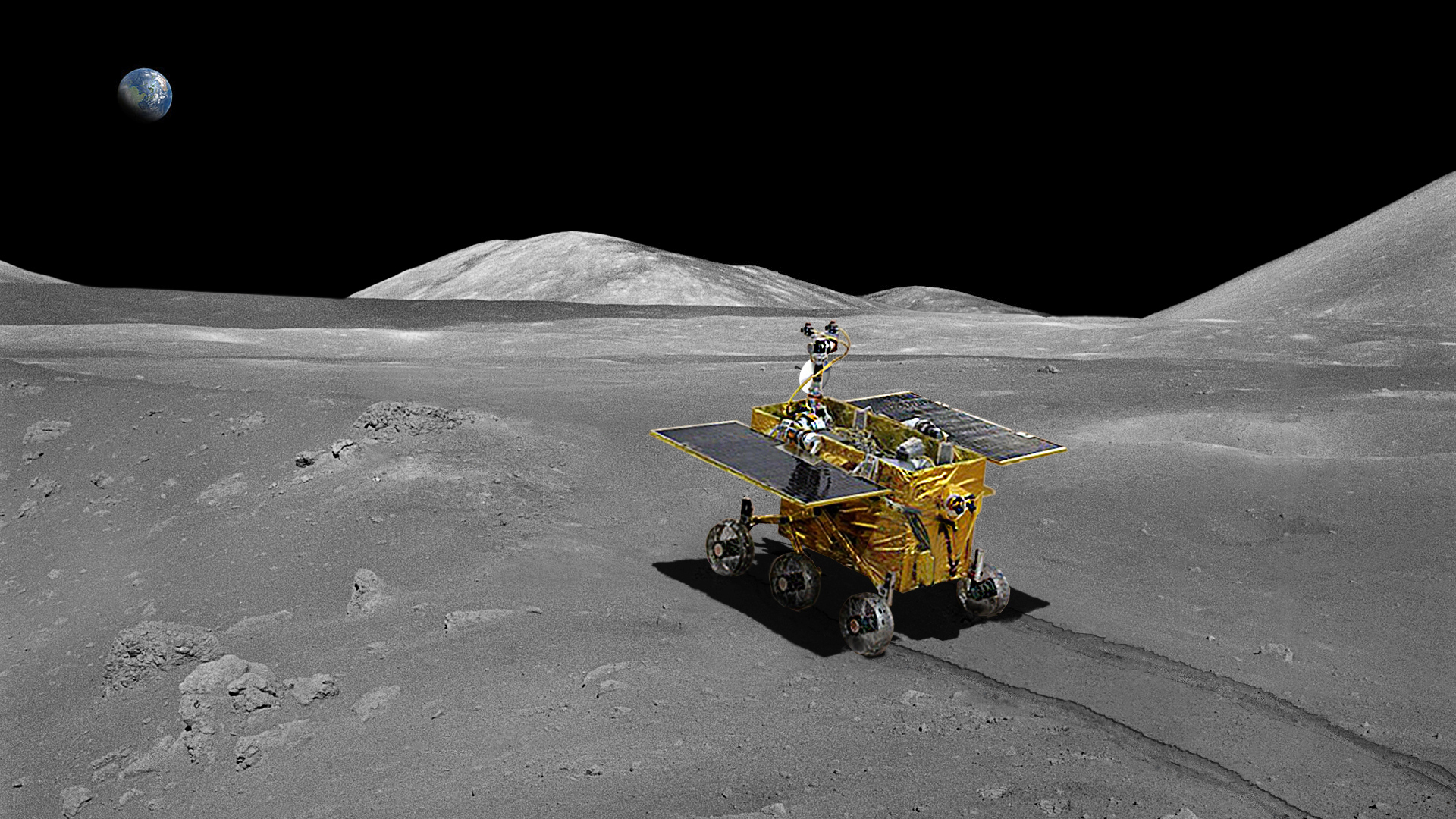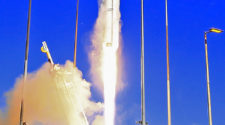
China scored a stunning, history making success with the successful touchdown of the ambitious Chang’e-3 probe with the ‘Yutu’ rover on the surface of the Moon Dec. 14, 2013, on the country’s first ever attempt to conduct a landing on an extraterrestrial body.
The dramatic Chang’e-3 soft landing on the lava filled plains of the Bay of Rainbows occurred at about 8:11 am EST, 9:11 p.m. Beijing local time, 1311 GMT.
The monumental feat is the first landing on the Moon by any entity in nearly four decades. It was broadcast live on CCTV, China’s state run television network. This marks a milestone achievement for China and clearly demonstrates the country’s technological prowess.
A tidal wave of high fives was unleashed by the huge teams of Chinese space engineers teams controlling the flight from the Beijing Aerospace Control Center (BACC).
China now joins an elite club of three, including the United States, who have mastered the critical technology required to successfully touch down on Earth’s nearest neighbor.
‘Yutu’ could very well serve as a forerunner for testing the key technologies required for a Chinese manned lunar landing in the next decade.
The Chang’e-3 mission is comprised of China’s ‘Yutu’ lunar lander riding piggyback atop a much larger four legged landing vehicle.
The voyage from the Earth to the Moon began 12 days earlier with the flawless launch of Chang’e-3 atop China’s Long March 3-B booster at 1:30 a.m. Beijing local time, Dec. 2, 2013 (12:30 p.m. EST, Dec. 1) from the Xichang Satellite Launch Center, in southwest China.
Chang’e-3 made a rocket powered descent to the Moon’s surface by firing the landing thrusters starting at the altitude of 15 km (9 mi) for a soft landing targeted to a preselected area on the Bay of Rainbows. The powered descent was autonomous and took about 12 minutes.
The variable thrust engine enabled Chang’e-3 to reduce its deceleration as it approached the moon. The descent was preprogrammed and controlled by the probe itself, not from the ground.
The descent engine fired until the lander was about hovering 100 meters above the lunar surface.
After determining it was safe to proceed, the lander descended further to about 3 meters. The engine then cut off and the lander free fell the remaining distance. The impact was cushioned by shock absorbers.
The Bay of Rainbows, or Sinus Iridum region, is located in the upper left portion of the moon as seen from Earth. You can see the landing site with your own eyes.
It was imaged in high resolution by China’s prior lunar mission – the Chang’e-2 lunar orbiter.
Yutu, which translates as Jade Rabbit, stands 150 centimeters high, or nearly 5 feet – human height. It weighs approximately 120 kilograms and sports a robotic arm equipped with advanced science instruments.
The rover and lander are equipped with multiple cameras, spectrometers, an optical telescope, ground penetrating radar and other sensors to investigate the lunar surface and composition.
The radar instrument installed at the bottom of the rover can penetrate 100 meters deep below the surface to study the Moon’s structure and composition in unprecedented detail.
Authored by Ken Kremer, an expanded version of this article appeared first at www.universetoday.com.



